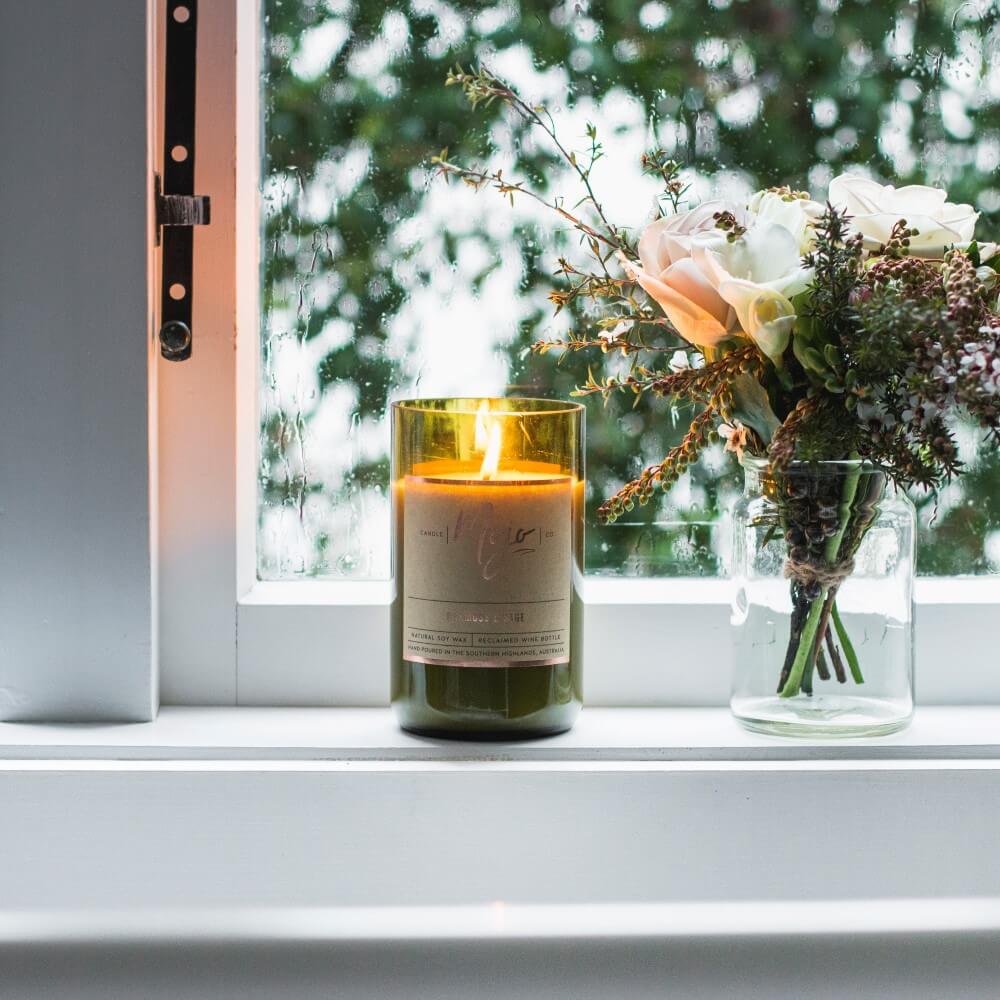Shop Sustainable Soy Wax Candles and Home Fragrance Collections
Shop Sustainable Soy Wax Candles and Home Fragrance Collections
Blog Article
From Wick to Wax: Comprehending the Chemistry Behind Soy Wax Candles and Their Environmental Effect
As we brighten our rooms with the cozy glow of candles, there lies a realm of complex chemistry behind the seemingly basic act of lighting a soy wax candle light. Join us as we untangle the scientific complexities behind soy wax candles and discover their ramifications on our setting.
Soy Wax Vs. Paraffin Wax
When contrasting soy wax and paraffin wax for candle light production, it is important to comprehend the unique attributes and advantages of each product. Soy wax is an all-natural, eco-friendly source originated from soybean oil, making it biodegradable and eco-friendly - soy candles. In contrast, paraffin wax is a byproduct of oil refining, which elevates problems concerning its ecological influence and sustainability
Soy wax candle lights melt cleaner and produce less residue contrasted to paraffin wax candle lights, making them a much healthier selection for interior air high quality. Additionally, soy wax has a lower melting factor, permitting for a longer-lasting candle light that distributes fragrance better. Paraffin wax, on the various other hand, has a tendency to shed faster and less cleanly, possibly releasing harmful chemicals into the air.
From a sustainability perspective, soy wax is preferred for its biodegradability and eco-friendly sourcing, lining up with the growing customer choice for environmentally conscious items. While paraffin wax has been a traditional selection in candle making due to its price and convenience of use, the change in the direction of environment-friendly options like soy wax is gaining energy in the industry.
Chemical Structure of Soy Wax

Burning Process in Soy Candles
The chemical structure of soy wax directly affects the combustion procedure in soy candles, influencing aspects such as burn time, fragrance release, and ecological impact. When a soy candle light is lit, the heat from the fire melts the wax near the wick.
The burning effectiveness of soy candle lights is influenced by the pureness of the soy wax website here and the quality of the wick. A clean-burning soy candle light with a correctly sized wick will certainly produce a constant fire and reduce residue formation. This not only extends the burn time of the candle yet also improves the launch of fragrances. In addition, soy wax candle lights have a lower ecological influence compared to paraffin candles as a result of their biodegradable and sustainable nature.

Environmental Benefits of Soy Wax

Considered a lasting alternative to standard paraffin wax, soy wax supplies noteworthy ecological benefits that make it a prominent selection among eco-conscious customers. Soy wax burns cleaner and generates less soot than paraffin wax, adding to better indoor air top quality and decreasing the requirement for cleansing and maintenance. In general, the ecological benefits of soy wax align with the expanding demand for review sustainable and eco-friendly products in the market.
Recycling and Disposal Considerations
Reusing and proper disposal of soy wax candles play a vital function in preserving environmental sustainability and decreasing waste in neighborhoods and homes. When it comes to reusing soy wax candles, the very first step is to guarantee that the article source candle has actually melted completely.

In terms of disposal, if recycling is not a choice, soy wax candle lights are biodegradable and can be safely taken care of in most household waste systems. Nonetheless, it is constantly suggested to examine with neighborhood reusing facilities or waste administration services for details guidelines on candle disposal to guarantee proper handling and ecological defense.
Verdict
In final thought, the chemistry behind soy wax candle lights exposes their environmental advantages over paraffin wax candle lights. Soy wax, stemmed from soybean oil, burns cleaner and generates less soot when compared to paraffin wax. The combustion procedure in soy candles is more effective, resulting in a longer and extra even burn. In addition, soy wax is sustainable and eco-friendly, making it an extra sustainable choice for candle production. Reusing and correct disposal of soy wax candle lights further add to their environmental effect.
When contrasting soy wax and paraffin wax for candle light production, it is necessary to understand the unique attributes and benefits of each material (soy wax candles).Soy wax candle lights burn cleaner and produce less soot compared to paraffin wax candle lights, making them a much healthier option for indoor air high quality.Taken into consideration a lasting alternative to typical paraffin wax, soy wax provides notable environmental advantages that make it a prominent choice amongst eco-conscious consumers. Soy wax burns cleaner and creates less soot than paraffin wax, contributing to far better indoor air high quality and reducing the requirement for cleaning and upkeep.In final thought, the chemistry behind soy wax candles reveals their ecological advantages over paraffin wax candles
Report this page